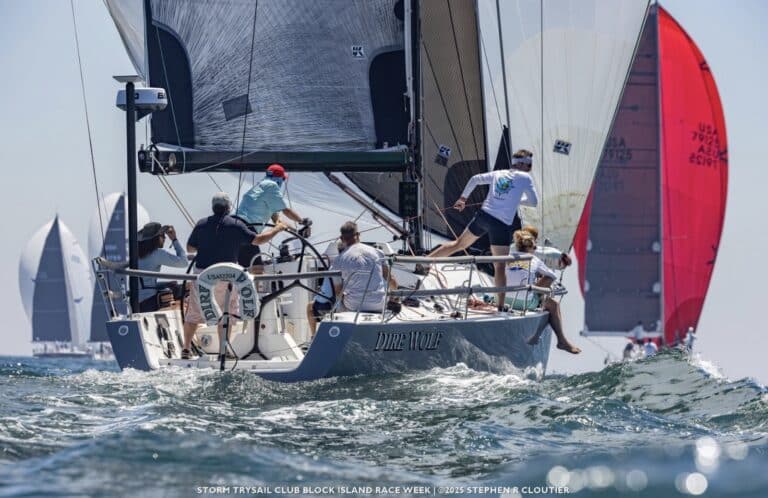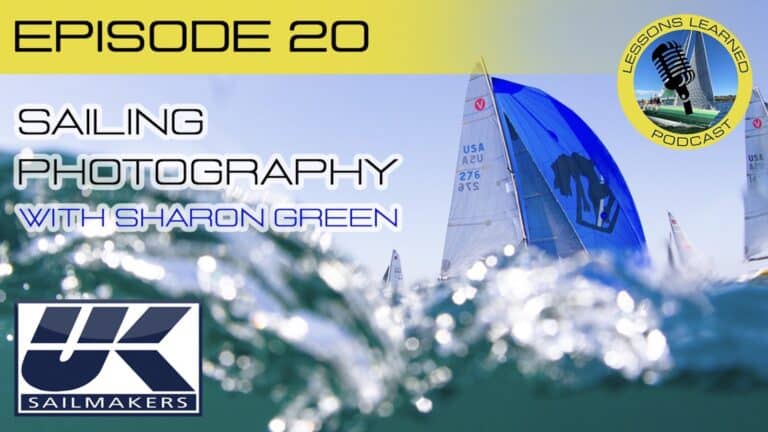Italia 11.98, CHRISTOPHER DRAGON, flying an A3 by UK Sailmakers Northeast.
How to choose the right sail for your inventory—whether you race, cruise, or do a bit of both.
In recent years, the Code Zero has become a go-to sail not just for racers, but for cruisers and performance cruisers alike. Lightweight, versatile, and easily deployed on a furler, the Code Zero fills a sweet spot between a genoa and a spinnaker. But as reaching sails become more popular, so does the confusion between a true Code Zero and other downwind or reaching options—like A3 asymmetricals or screechers.
Here’s how to choose the right sail for your sailing style, boat type, and rating rules.
What Is a Code Zero, Really?
Originally developed to take advantage of rating rule loopholes, the Code Zero is a hybrid sail that combines characteristics of both genoas and spinnakers:
- A Code Zero can rate as either a headsail or a spinnaker, depending on its mid-girth. If the mid-girth exceeds 75% of the foot length, it typically qualifies as a spinnaker
- Looks and trims more like a genoa, with a high-aspect, flat shape and a tight luff designed for upwind or close reaching angles
- Most effective in light to moderate conditions, typically between 5–15 knots
- Commonly set on a top-down furler, making it manageable for short-handed crews and ideal for both racing and cruising
In the right conditions, having the right reaching sail can be a game-changer. A well-designed Code Zero—or another specialty reaching sail—can become a true weapon on the race course or speed up a long passage, especially when angles and wind speeds line up in your favor.
Learn more about Code Zeros for racing →

A J/121 with a UK Sailmakers laminate Code Zero.
Reaching Spinnakers: A Different Animal
By contrast, asymmetrical reaching spinnakers (such as an A1, A3 or A5) are designed to handle higher wind speeds and are optimized for deeper reaching angles than a Code Zero.
- They have a fuller shape and broader shoulders than a Code Zero, but are narrower and flatter than running spinnakers (such as an A2 or A4)
- These sails are typically flown from a bowsprit or spinnaker pole
- The A5, in particular, is a popular choice as a “chicken chute”—a more forgiving spinnaker used in heavy air or offshore conditions where control and durability are critical
Explore Matrix spinnakers for reaching and downwind performance →

Left: a Code Zero, center: an A3 reaching spinnaker, right: an A2 running spinnaker.
Can One Sail Do Double Duty?
In some cases—especially for cruising programs or shorthanded racers—a well-designed A3 can act as a pseudo-Code Zero, giving you a broader range with a single sail. However, there are tradeoffs:
- An A3 won’t point as high as a true Code Zero
- Code Zeros are built flatter and with less shoulder, making them furl more cleanly and reliably than reaching spinnakers
- Using one sail to cover two jobs means you’re compromising shape and performance in one direction or the other
Our design team can help you determine whether a multipurpose solution or dedicated sails are better for your needs.
Get a free, no-obligation quote from your local UK Sailmakers loft →
Racing Considerations: What’s in Your Rating?
If you race under a rule like IRC, it’s important to understand that carrying additional sails—especially overlapping spinnakers or extra furling sails—can affect your rating. A sail that gives you more range might cost you points on corrected time.
Many racers aim to keep their sail inventory as streamlined as possible, using versatile designs that cover a broad range of conditions.
For example, a Code Zero could measure as either a headsail or a spinnaker depending on its dimensions, such as mid-girth—impacting how it’s rated.
UK Sailmakers works closely with racing teams to analyze rating implications and custom-build sails that maximize both on-water performance and rating efficiency.

Two Arcona performance cruisers flying UK Sailmakers’ asymmetrical spinnakers. Photo © Henrik Trygg.
Cruising Considerations: Keep It Simple
For cruising sailors, the priority is often ease of use and versatility. A furling Code Zero—or an Easy Furl Code D or Screecher designed specifically for multihulls—can make daysailing more enjoyable and boost confidence on longer passages.
- Talk to us about UV covers, anti-torsion cables, and furler systems or snuffers that make hoisting and dousing fast and safe
- Monohull or multihull, our team can tailor a solution for your rig and sailing goals
Learn more about Downwind Sails for Cruisers →

A Beneteau Sense 51 equipped with a UK Sailmakers laminate Cruising Code Zero.
The Bottom Line
Whether you’re racing offshore, cruising the coast, or somewhere in between, choosing the right sail, or combination of sails, starts with assessing your current setup and identifying what will best suit your target wind range, sailing angles, and, if racing, your rating considerations.
A true Code Zero is a specialized tool. A reaching kite is another. Trying to make one do the other’s job can work, but usually with trade-offs. Talk to your local UK loft to build an inventory that’s tuned for your program, your goals, and your boat.




